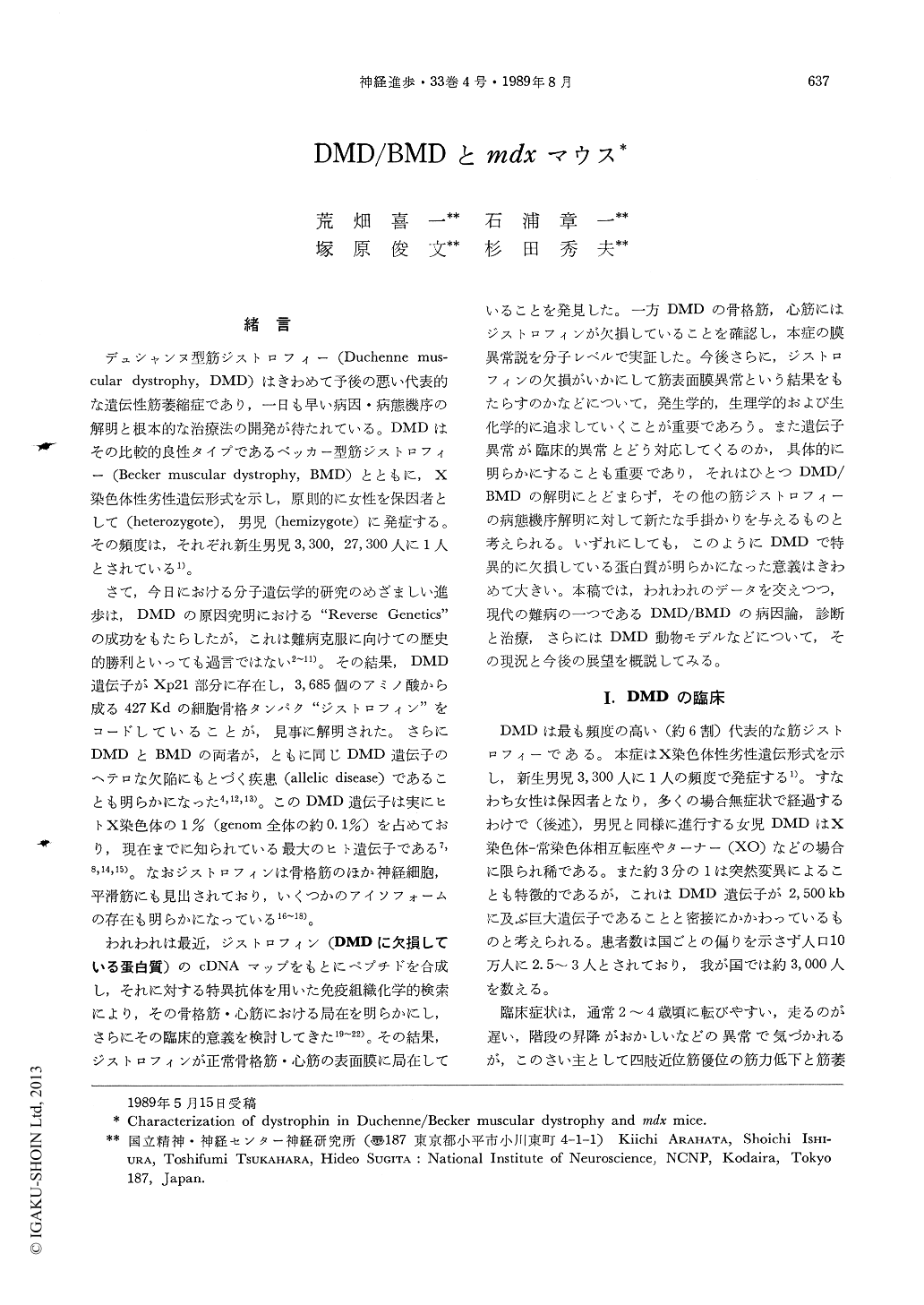Japanese
English
- 有料閲覧
- Abstract 文献概要
- 1ページ目 Look Inside
緒言
デュシャンヌ型筋ジストロフィー(Duchenne muscular dystrophy,DMD)はきわめて予後の悪い代表的な遺伝性筋萎縮症であり,一日も早い病因・病態機序の解明と根本的な治療法の開発が待たれている。DMDはその比較的良性タイプであるベッカー型性ジストロフィー(Becker muscular dystrophy,BMD)とともに,X染色体性劣性遺伝形式を示し,原則的に女性を保因者として(heterozygote),男児(hemizygote)に発症する。その頻度は,それぞれ新生男児3,300,27,300人に1人とされている1)。
さて,今日における分子遺伝学的研究のめざましい進歩は,DMDの原因究明における"Reverse Genetics"の成功をもたらしたが,これは難病克服に向けての歴史的勝利といっても過言ではない2〜11)。その結果,DMD遺伝子がXp21部分に存在し,3,685個のアミノ酸から成る427Kdの細胞骨格タンパク"ジストロフィン"をコードしていることが,見事に解明された。さらにDMDとBMDの両者が,ともに同じDMD遺伝子のヘテロな欠陥にもとつく疾患(allelic disease)であることも明らかになった4,12,13)。
Both Duchenne (DMD) and Becker (BMD) muscular dystrophies are X-linked recessive muscle diseases which share common DMD gene defect in the Xp21 region. The gene has recently been isolated by Kunkel's group and shown to be the largest gene known in man, spanning at least 65 exons distributed over 2,500 kb. Its 14 kb mRNA produces a 427 kd protein named ‘dystrophin’ in normal muscle. We have recently shown that an antiserum raised against a synthetic peptide fragment predicted from the DMD cDNA had a specific immunohistochemical reaction with the surface membrane of normal skeletal and cardiac muscle fibers, whereas it had no reaction with muscles from patients with DMD and mdx mice. We also have reported the mosaic expression of dystrophin in symptomatic carriers of Duchenne muscular dystrophy, which may have special implications for genetic counseling. In this reveiw article we outline the cloning and the expression of DMD gene, molecular model of dystrophin and its physiological function, localization in normal muscle and various neuromuscular diseases including DMD and BMD and DMD carrier. Immunohistological and biochemical differences of DMD and BMD was also discussed, as well as animal model of DMD with special interest in mdx mice.

Copyright © 1989, Igaku-Shoin Ltd. All rights reserved.


